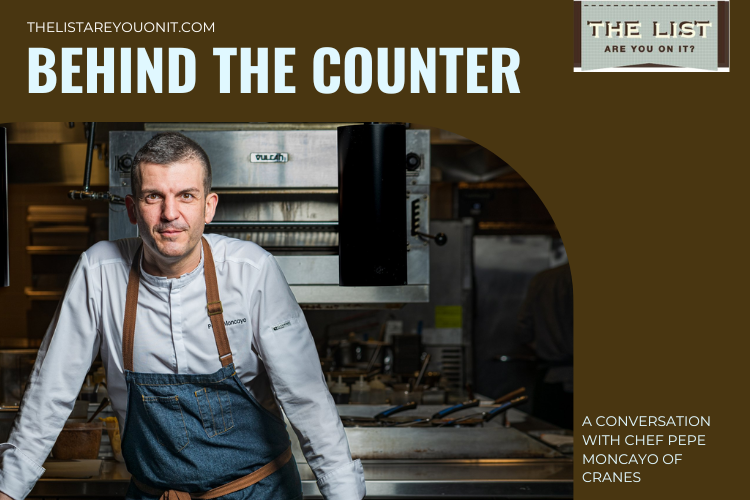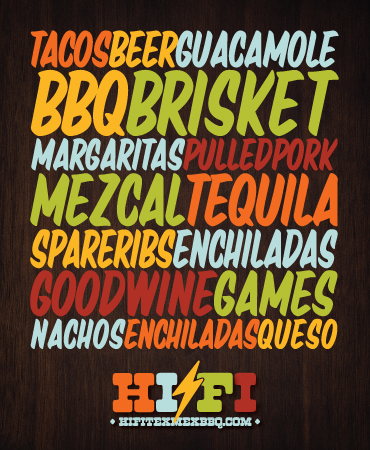
Behind the Counter: Chef Pepe Moncayo of Cranes
Have you had the opportunity to dine at Crane's in Penn Quarter? Let me introduce you to Chef Pepe Moncayo, the visionary behind the concept. A Barcelona native, his culinary journey is a testament to passion and perseverance. He began his career by enrolling in culinary school and taking on the role of a chef at Hotel Alimara. Over the years, he honed his craft while working in some of Barcelona's most renowned dining establishments.
Following a successful stint at the Michelin-starred Via Veneto, he was invited to join the prestigious three-Michelin-starred Can Fabes, where he worked alongside the culinary superstar Catalan Chef Santi Santamaria.
Chef Pepe moved to Singapore, where he served as Chef Santi's second in command at the newly established restaurant Santi in Marina Bay Sands. Interested investors eventually led him to launch his inaugural solo restaurant in Singapore, "Bam!" in 2013.
Chef Pepe's culinary journey took a turn when he explored the art of modern shudo during a culinary expedition to Japan. He visited the renowned Katsuyama sake brewery, which further fueled his passion for pairing sake with his unique interpretation of Spanish-Japanese cuisine.
Chef Pepe moved to the United States with his family in 2019. This move led to the inception of Cranes, a culinary venture that not only navigated the challenges of the Covid-19 pandemic successfully but also continues to thrive. At Crane's, Chef Pepe serves his version of Spanish gastronomy, taking traditional recipes and reimagining them with a modern twist. We here at TheListAreYouOnIt.com wanted to know more from Chef Pepe and, we thought you’d might to:
What inspired you to migrate to the United States, and how has the American culinary scene influenced your cooking?
Numerous factors, primarily professional, led me to choose the United States as my new home. However, the most significant driving force was my family. Having personally undergone the transformative experience of transitioning from life in Barcelona to a completely different environment on the opposite side of the globe, I recognized the immense value in such cultural immersion. I desired to offer my family the same enriching experience.
As a chef, my culinary style is heavily influenced by the ingredients available to me and the collaborative dynamics within my kitchen. This geographical shift has undeniably altered my culinary journey, shaping me into the chef I am today compared to five years ago.
What initially sparked your interest in blending Spanish and Asian culinary traditions?
My journey began with a transformative encounter at a sake brewery in Sendai back in 2012. The owner's innovative approach of pairing sake with Italian cuisine sparked a paradigm shift for you. Inspired by this fusion, I returned to Singapore and embarked on the creation of a Spanish tapas and sake bar. As I delved deeper into this culinary venture, Japanese ingredients and techniques naturally found their way onto your menu, leading to an organic blending of Spanish and Asian culinary traditions.
How has your experience working with renowned chefs like Santi Santamaria and Javier and Sergio Torres influenced your approach to cooking?
Working alongside culinary legends like Santi Santamaria and Javier and Sergio Torres has been an invaluable experience that has deeply shaped my approach to cooking. These chefs are not just masters of their craft; they are visionaries who have left an indelible mark on the culinary world.
First and foremost, their emphasis on ingredients has become ingrained in my culinary philosophy. For them, it's not just about cooking; it's about showcasing the best that nature has to offer. Whether it's sourcing the freshest seafood or hand-picking the ripest produce, they instilled in me the importance of quality ingredients as the foundation of every great dish.
Each of these chefs has their own unique style, but they share common values of discipline, consistency, and the relentless pursuit of excellence. In their kitchens, there's no room for shortcuts or mediocrity. Every dish must meet their exacting standards, ensuring that every guest receives an unforgettable dining experience.
One chef who particularly stands out is Santi Santamaria. In an era when culinary trends were rapidly evolving, he remained steadfast in his commitment to tradition and ingredients. His visionary approach challenged the emerging avant-garde movement led by Ferran Adrià, sparking a spirited debate within the culinary community. While Adrià's innovations reshaped the gastronomic landscape, Santamaria's steadfast defense of tradition earned him respect as a visionary in his own right.
Working alongside these culinary giants has been an honor and a privilege. Their mentorship has not only honed my culinary skills but has also instilled in me a deep appreciation for the artistry and craftsmanship of cooking. As I continue my culinary journey, I carry with me the lessons learned from these masters, striving to uphold their legacy of culinary excellence.
Looking ahead, do you have any new culinary projects or directions you're excited to explore?
Exploring your culinary roots sounds like a fantastic journey! Returning to your homeland can often spark creativity and inspiration.
Lastly, what advice would you give to aspiring chefs who are passionate about blending diverse culinary traditions in their cooking?
“Go for it!”
One of the dishes emblematic of Catalan cuisine is Canelons de la Iaia, translating to Grandma's cannelloni. Traditionally prepared with leftover meats the day after Christmas, it holds a cherished place in our culinary heritage.
In crafting this dish, consider incorporating elements such as:
- Meat rillette (utilizing the French technique)
- Bechamel sauce (drawing from the French mother sauce tradition)
- Grated Parmesan cheese (an essential Italian ingredient)
- Caneloni pasta sheets (employing an Italian product/technique)
This blend highlights the natural evolution of cuisine through cultural exchange. Fusion is not a new concept but a perpetual phenomenon, reflective of our shared human experience. As time passes, distinctions blur, and what we once label as fusion becomes an integral part of culinary tradition.


